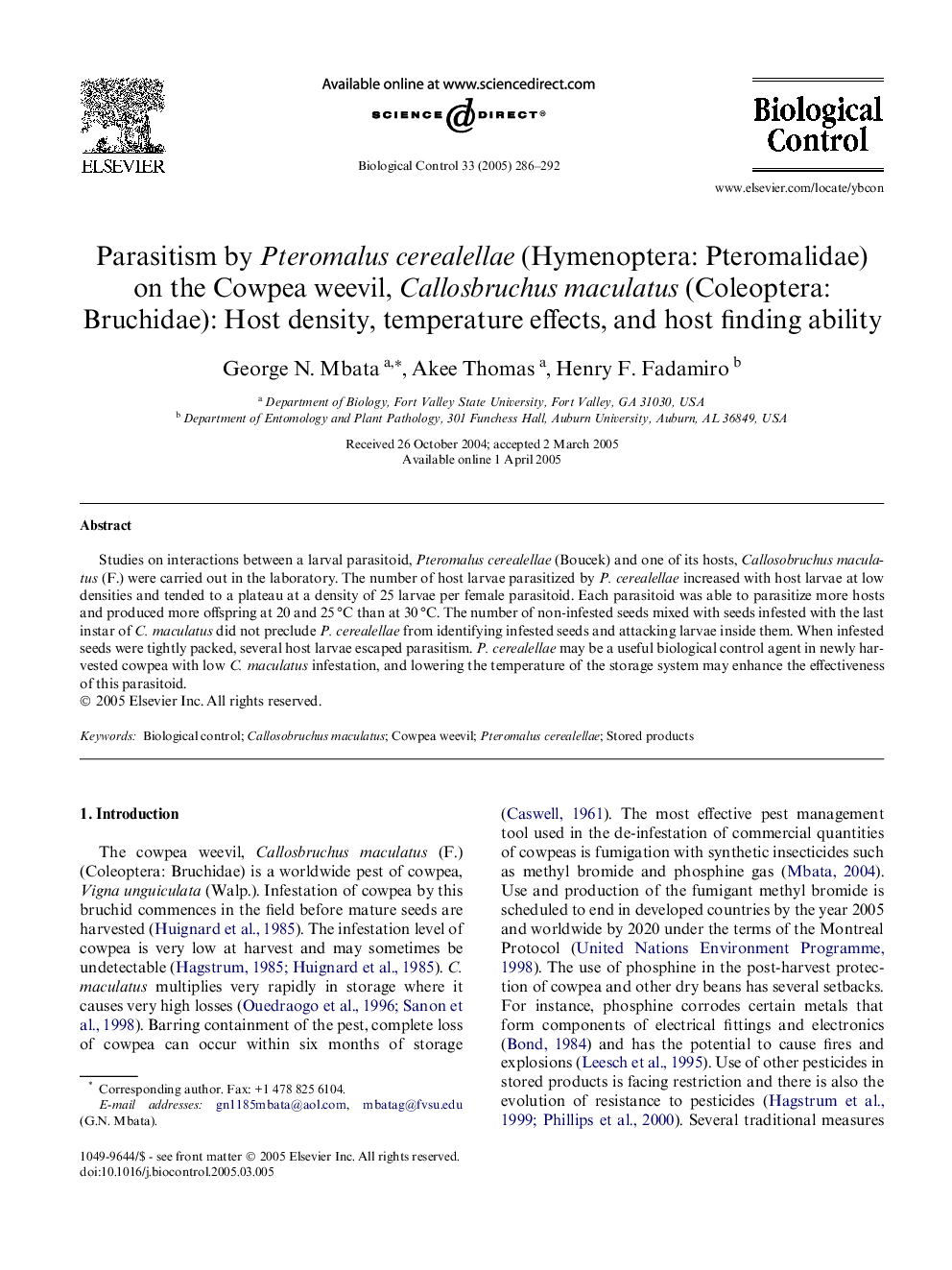| Article ID | Journal | Published Year | Pages | File Type |
|---|---|---|---|---|
| 9472109 | Biological Control | 2005 | 7 Pages |
Abstract
Studies on interactions between a larval parasitoid, Pteromalus cerealellae (Boucek) and one of its hosts, Callosobruchus maculatus (F.) were carried out in the laboratory. The number of host larvae parasitized by P. cerealellae increased with host larvae at low densities and tended to a plateau at a density of 25 larvae per female parasitoid. Each parasitoid was able to parasitize more hosts and produced more offspring at 20 and 25 °C than at 30 °C. The number of non-infested seeds mixed with seeds infested with the last instar of C. maculatus did not preclude P. cerealellae from identifying infested seeds and attacking larvae inside them. When infested seeds were tightly packed, several host larvae escaped parasitism. P. cerealellae may be a useful biological control agent in newly harvested cowpea with low C. maculatus infestation, and lowering the temperature of the storage system may enhance the effectiveness of this parasitoid.
Keywords
Related Topics
Life Sciences
Agricultural and Biological Sciences
Agronomy and Crop Science
Authors
George N. Mbata, Akee Thomas, Henry F. Fadamiro,
